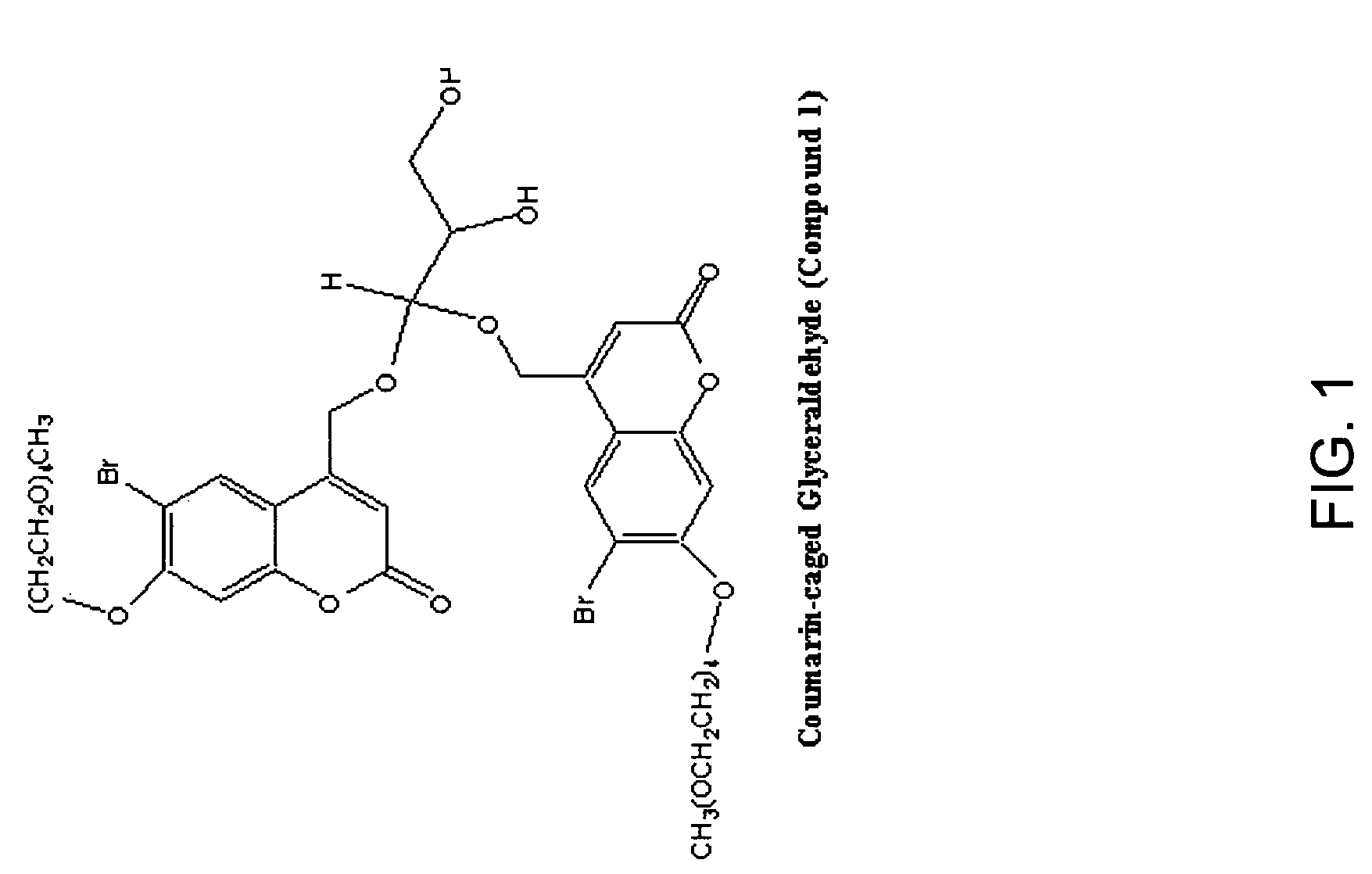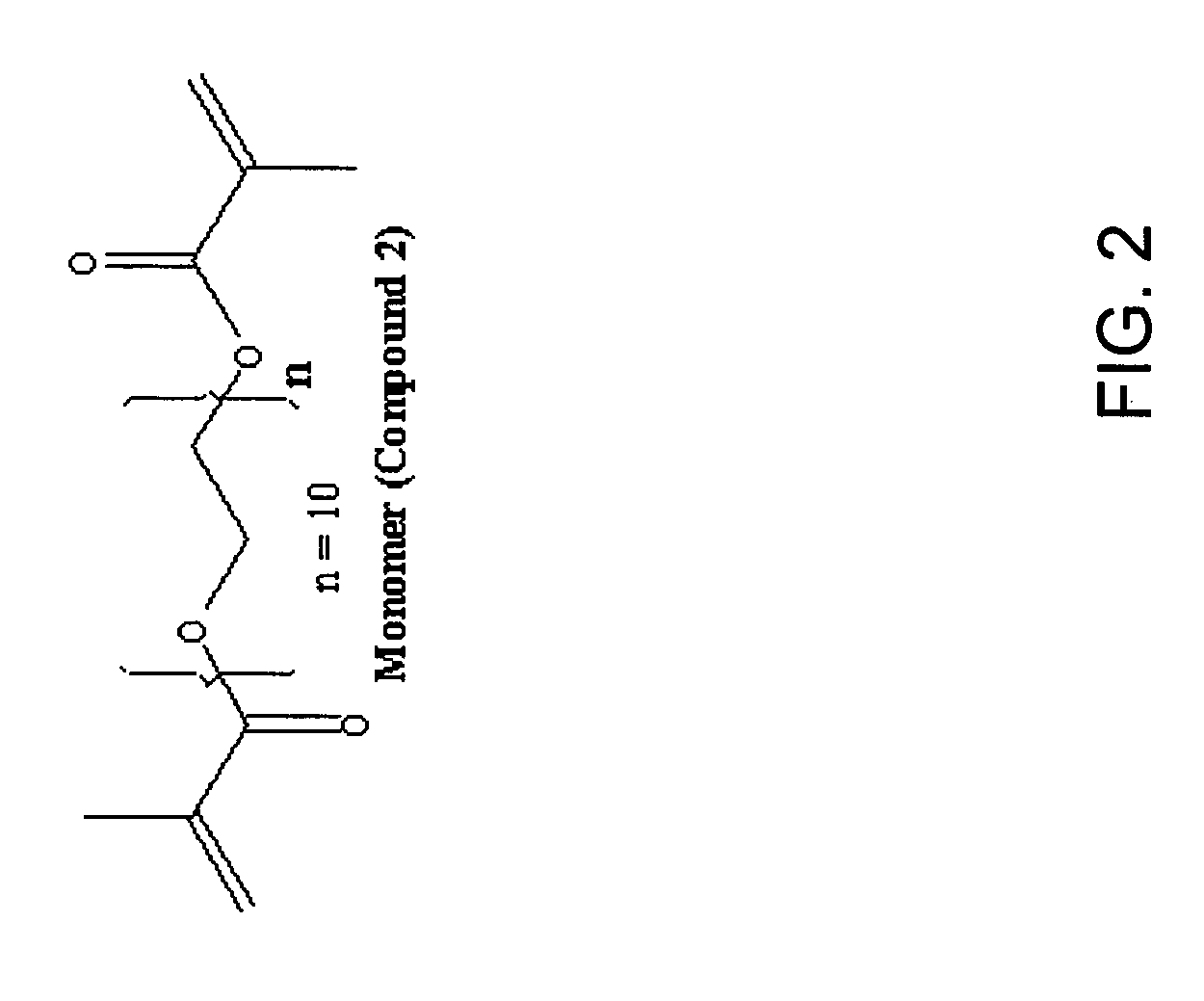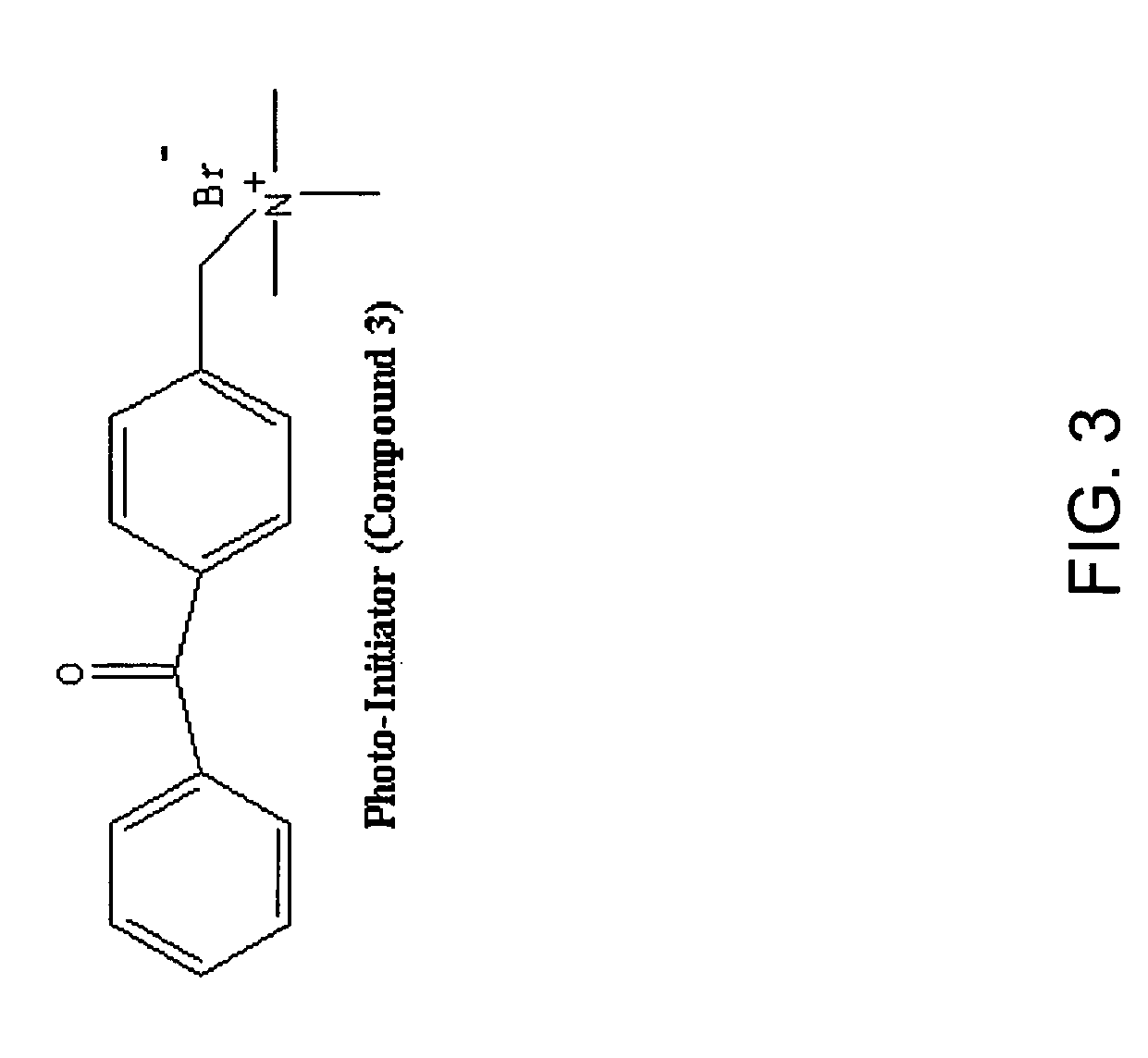Treatment of myopia
a treatment and myopia technology, applied in the field of ophthalmology and cell biology, can solve the problems of ineffectiveness, toxicological limitations, and inability to achieve the effects of reducing or stopping the thinning of the sclera, improving the mechanical stability of the eye, and improving the mechanical stability
- Summary
- Abstract
- Description
- Claims
- Application Information
AI Technical Summary
Benefits of technology
Problems solved by technology
Method used
Image
Examples
example 1
Increasing Sclera Modulus by Poly(ethylene-glycol) Dimethacrylate (PEGDM) Treatment
[0105]The present invention includes a method for treatment of myopia by altering the physical or chemical properties of the sclera. In one example of such treatment, photopolymerizable molecules may be used to obtain the desired results, including thickening, reinforcing, crosslinking, and strengthening of the sclera. Such molecules will be inactive upon administration and only activated by locally directed energy, like light or ultrasound. The application of said treatment will be in a pharmacologically approved method, preferably retrobulbar administration.
[0106]As a specific example, the inactive molecules can be applied retrobulbarly and given 5 to 60 minutes to diffuse into the sclera to the desired depth. Molecular perfusion may be monitored with fluorescent tags either attached to the inactive molecule or unattached but diffusing at the same rate as the molecules. The molecules can then be act...
example 2
Increase of Scleral Structural Integrity
[0112]As described in Example 1, treatment for myopia may possibly utilize molecules such as PEGDM. In addition to variables described above, different molecular weight monomers may give rise to different properties, such as thickness, strength, flexibility, and permeability, in the treated tissue.
[0113]Studies were employed to determine if human sclera perfused with PEGDM solutions and irradiated with UV light would gain increased structural integrity as measured in the storage modulus G′.
Methods
[0114]Fresh 8 mm diameter scleral tissue sections were cut from the posterior pole of human donor eyes (2) for 30 min using a mercury lamp. After irradiation and photopolymerization, the scleral sections were placed in a DPBS rinse for 4.5 hours at 22° C. The final modulus was then measured using the same procedure as for the initial modulus.
[0115]As seen in FIG. 5, the change in modulus increases with increased PEGDM concentration. From this data, no...
example 3
Exemplary Polymerization Initiators and Synthesis Thereof
[0117]In embodiments wherein a photopolymerizable compound is employed, the compound is preferentially provided with a photoinitiator. Although a variety of photoinitiators may be utilized, FIG. 6 illustrates the synthesis of three exemplary polymerization initiators:
[0118](1) Two-Photon Polymerization Initiator
[0119]Synthesis of Compound 2: To a flask were added 2.5 gm (7.71 mmol) of 2,7-dibromofluorene (compound 1), 4.8 gm (19.1 mmol) of tert-butyl 6-iodohexanoate and 200 mg of 12-crown-6 was added 80 mL of DMSO and 7 mL of water, followed by adding 1.5 gm (26.8 mmol) of KOH. The reaction mixture was stirred under Argon overnight. The reaction mixture was diluted by adding 500 mL of ethyl acetate and 400 mL of the brine solution. After shaking well, the organic layer was separated and washed again with the brine. The organic layer was dried over sodium sulfate and concentrated. Silica gel (150 gm) was loaded with hexane, the...
PUM
| Property | Measurement | Unit |
|---|---|---|
| irradiance | aaaaa | aaaaa |
| diameter | aaaaa | aaaaa |
| normal force | aaaaa | aaaaa |
Abstract
Description
Claims
Application Information
 Login to View More
Login to View More - R&D
- Intellectual Property
- Life Sciences
- Materials
- Tech Scout
- Unparalleled Data Quality
- Higher Quality Content
- 60% Fewer Hallucinations
Browse by: Latest US Patents, China's latest patents, Technical Efficacy Thesaurus, Application Domain, Technology Topic, Popular Technical Reports.
© 2025 PatSnap. All rights reserved.Legal|Privacy policy|Modern Slavery Act Transparency Statement|Sitemap|About US| Contact US: help@patsnap.com



